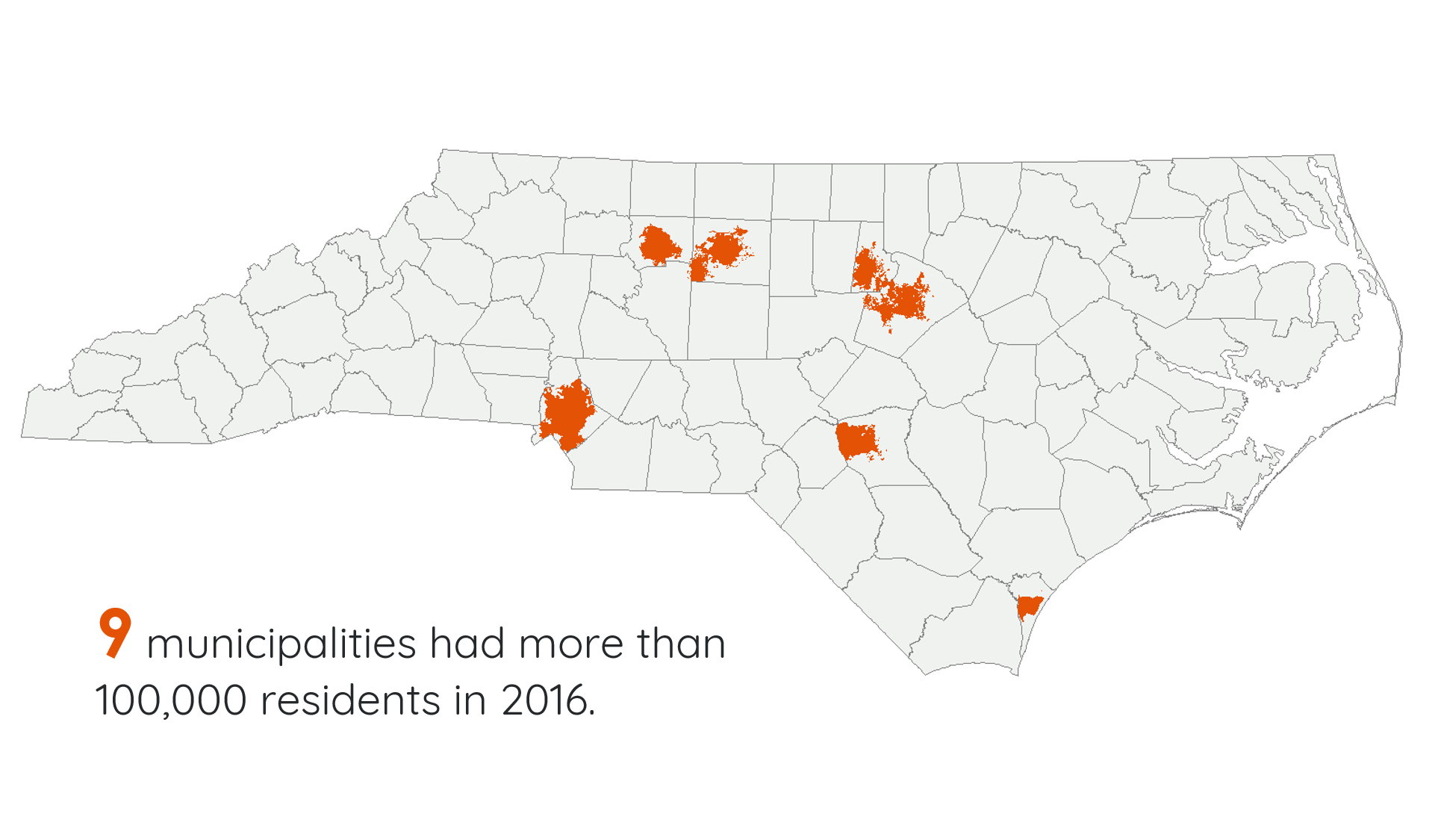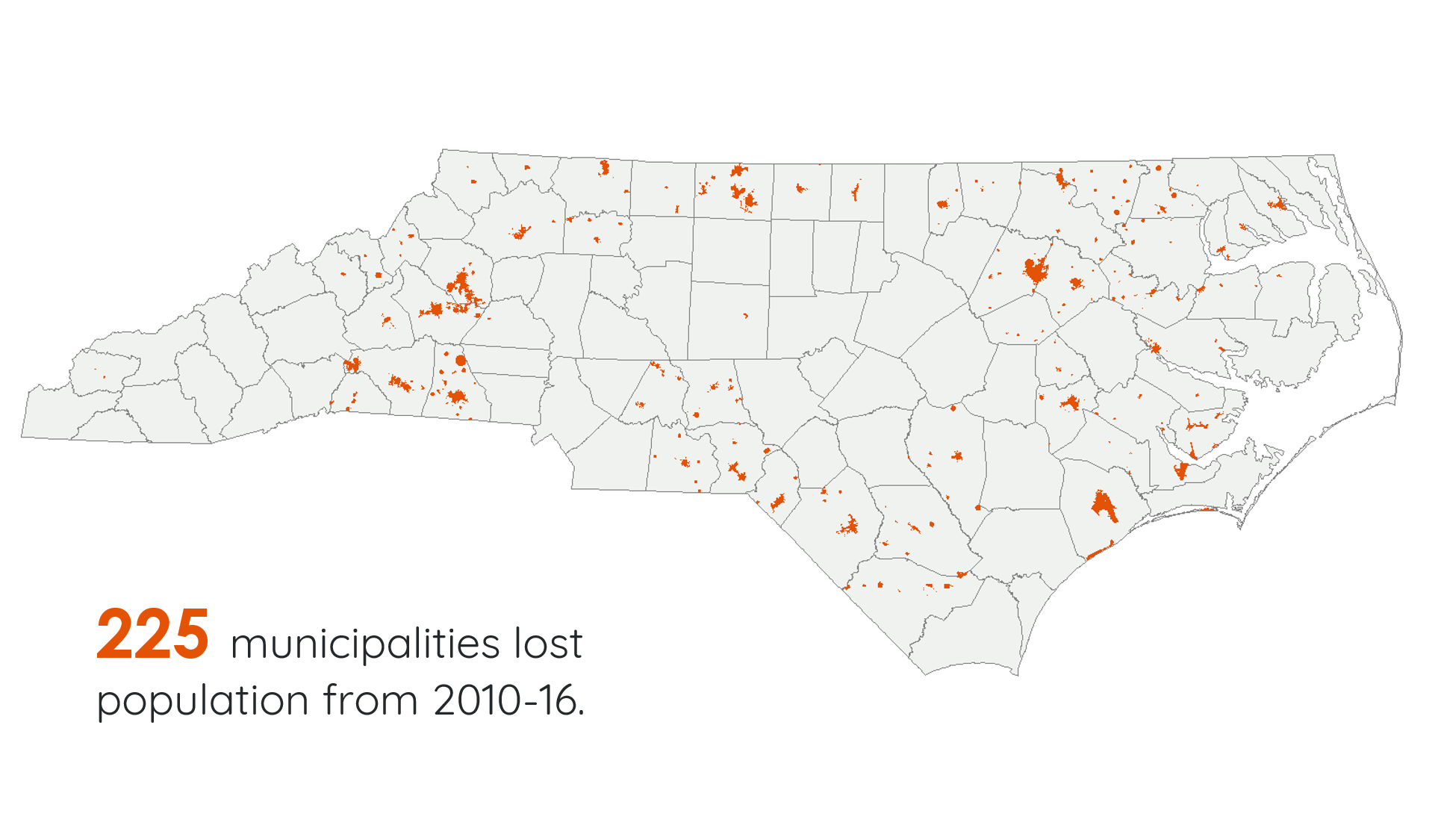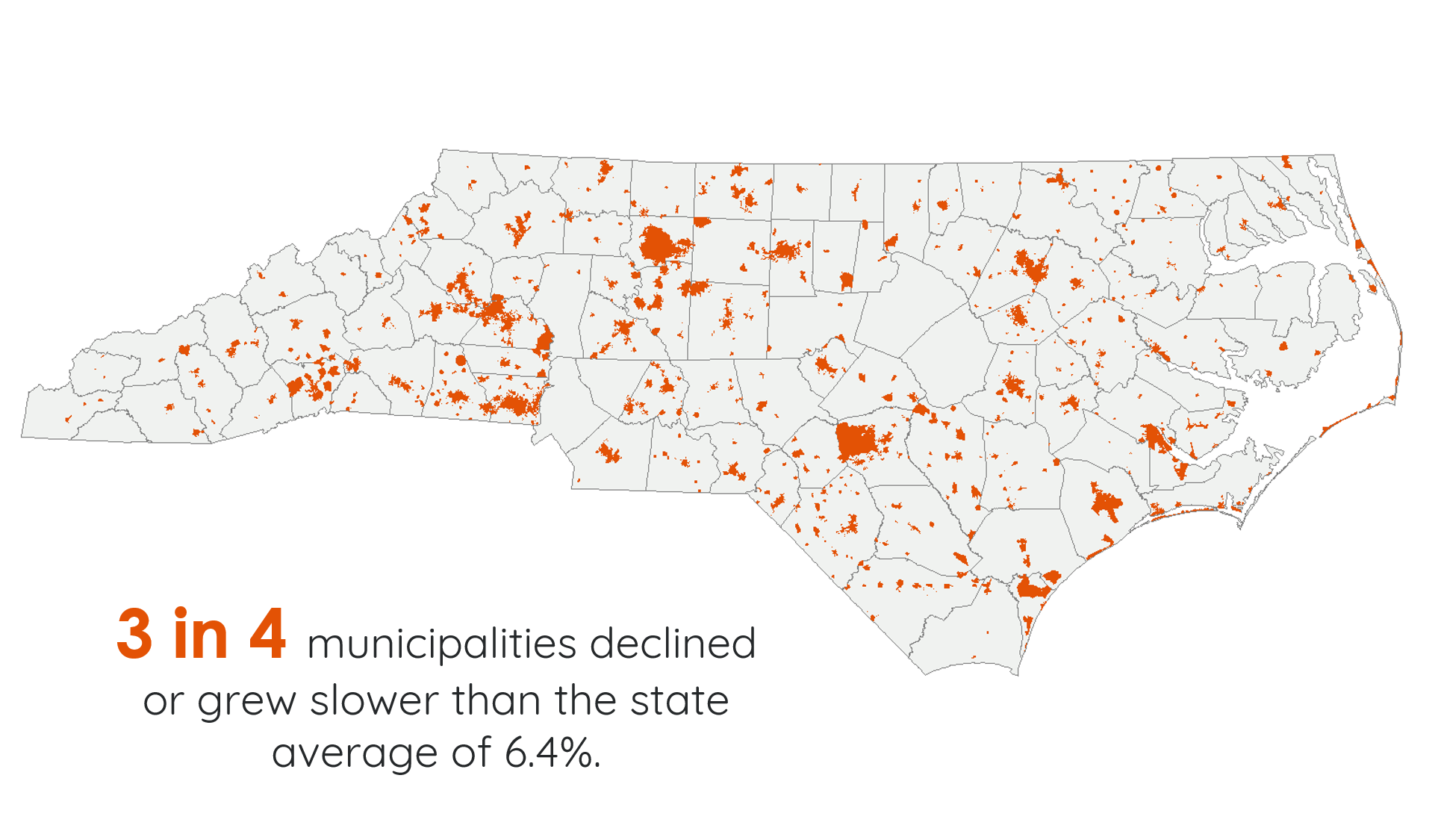NC in Focus: Revisiting the 2016 Population Estimates

Earlier this year, we discussed in a series of blog posts the recent 2016 Census Bureau population estimates for North Carolina. While some municipalities in North Carolina have experienced stable, even explosive growth since 2010, a large portion have experienced little to no population growth in this decade. We are revisiting these estimates with a series of maps of North Carolina’s municipalities. When visualized spatially, several aspects of North Carolina’s unique growth patterns are revealed.
Rural and Urban Areas in North Carolina

North Carolina is notable for its persistent rurality compared with other states. Rural areas are defined as having fewer than 2,500 residents, the Census Bureau’s threshold for an “Urban Cluster”. As of the 2016 population estimates, 326 of North Carolina’s municipalities had fewer than 2,500 residents. By this threshold, over half (59%) of all cities and towns in the state are rural. These small municipalities exist in nearly every county of the state. Collectively, these municipalities grew by just 1.4% since 2010, adding a combined total of 3,771 new residents.

At the other extreme, there are just nine municipalities in North Carolina with a population greater than 100,000 in 2016: Charlotte, Raleigh, Greensboro, Durham, Winston-Salem, Fayetteville, Cary, Wilmington, and High Point.
Population Growth Concentrated in Urban Areas

Source: U.S. Census Bureau
These seven municipalities were responsible for 45% of the state’s entire growth from 2010-2016. Since the last decennial Census in 2010, North Carolina has seen its urban metropolitan areas grow consistently larger, while small municipalities have struggled to maintain population.

Per the most recent estimates, 225 of North Carolina’ municipalities, or 41%, experienced population decline in this decade. The map above reveals the spatial correlation between municipalities with diminishing populations and rural areas. In general, population decline tends to take place in North Carolina’s smallest communities. In order to assess population development in the next decade, it is necessary to also examine municipal populations which have lagged behind the state.

Stagnant growth is defined as any population which grew slower than the state average of 6.4% from 2010 to 2016. Three in four municipalities meet this figure, including some important cities: Winston-Salem and Fayetteville. Winston-Salem grew by about 5.5% from 2010 to 2016, just under the state average of 6.4%. The Census Bureau estimates that Fayetteville’s population increased by just 2%.
Please note: the population estimates produced by the state demographer differ from those produced by the U.S. Census Bureau. The overall methodology and the specific data used to measure group quarters – in this instance, military barracks – differs between the two agencies. While the state demographer has documented Fayetteville’s population growth as twice as much since 2010 as the Census’ estimate, it still lags behind the state average at just 4% growth since 2010.
In summary, North Carolina’s rural municipalities span the entire perimeter of the state and make up more than half of the state’s total cities and towns. North Carolina’s 7 largest municipalities contain roughly 2% of the state’s total land mass and accounted for nearly half of its total growth in this decade. A sizable portion of the state municipalities have been in decline since 2010, particularly among those with a population less than 2,500. A large majority of municipal populations have declined or grown slower than the state, revealing the select few areas driving the state’s overall growth.
Errata: Carolina Demography originally listed seven municipalities with populations over 100,000 in 2016. There are in fact nine municipalities with populations of 100,000 residents or greater.
Need help understanding population change and its impacts on your community or business? Carolina Demography offers demographic research tailored to your needs.
Contact us today for a free initial consultation.
Contact UsCategories: NC in Focus
Tags: 2016, Census Bureau, decennial census, population estimates, population growth

The Center for Women’s Health Research (CWHR) at the University of North Carolina School of Medicine released the 12th edition of our North Carolina Women’s Health Report Card on May 9, 2022. This document is a progress report on the…

Dr. Krista Perreira is a health economist who studies disparities in health, education, and economic well-being. In collaboration with the Urban Institute, she recently co-led a study funded by the Kate B. Reynolds Foundation to study barriers to access to…

Our material helped the NC Local News Lab Fund better understand and then prioritize their funding to better serve existing and future grant recipients in North Carolina. The North Carolina Local News Lab Fund was established in 2017 to strengthen…
Your support is critical to our mission of measuring, understanding, and predicting population change and its impact. Donate to Carolina Demography today.